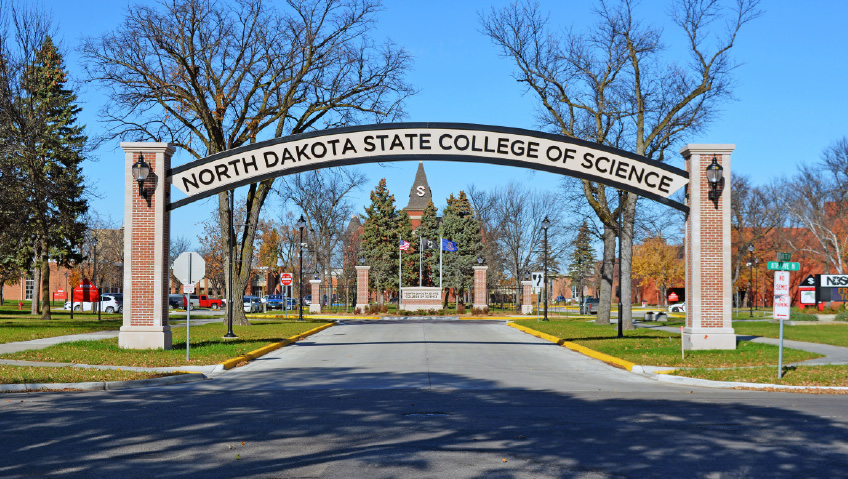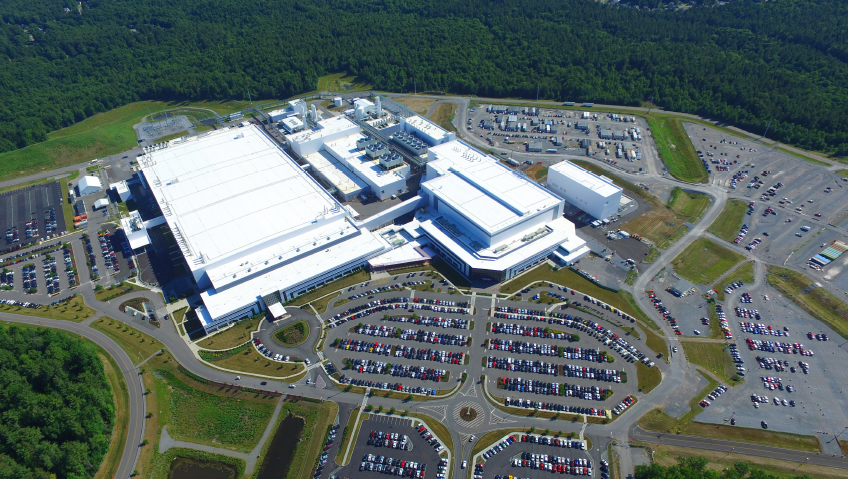Wahpeton is a small city in North Dakota with big ambitions. Wahpeton (pronounced “Waa-pet-on”) is determined to attract new residents and businesses alike with its safe neighborhoods, good schools, civic spirit, and business-friendly ethos.
“It sounds a little vague and clichéd, but we feel Wahpeton’s a great place to live and work, play, and thrive,” says Chris DeVries, Community Development Director for the city. We have a really nice community that’s close to bigger amenities, but we don’t have some of the issues that the big cities do.”
Incentivizing business
Companies are very welcome to set up in Wahpeton or expand existing operations (“Wahpeton has a pro-industry, pro-business, and pro-economic development philosophy,” notes the city website).
To this end, the City of Wahpeton government offers incentives to businesses, new or existing, including “small, no-interest loans, or sometimes a grant to a new business. We do have a revolving loan fund; we have a lower-interest loan for a business if it’s new or if it’s expanding,” says DeVries. In tandem with the Bank of North Dakota, the city also offers the ‘PACE’ and ‘Flex PACE’ Interest Buydown programs which reduce interest payments on business loans.
The city isn’t picky about what industries it wants to attract: “We have a lot of agriculture-related businesses here, so we’re a good fit for these kinds of businesses. But really, we’re just interested in growing the community and making it better for the residents and businesses already here. We’re open to industry, retail, services, and more,” says DeVries.
Approximately 8 percent of Wahpeton’s workforce is engaged in agriculture, forestry, fishing, hunting, or mining, (compared to 1.7 percent of the entire U.S. workforce). Wahpeton also has a strong manufacturing base, with 18.4 percent of the city’s workforce employed in this sector, “significantly larger than the 6.7 percent and 10.0 percent of jobs for which manufacturing accounts in North Dakota and the United States respectively,” states a report called the 2045 Wahpeton Comprehensive Plan. That said, almost a quarter (24.1 percent) of Wahpeton’s workforce is in education, healthcare, or social assistance, while 15.7 percent is employed in retail.
Excellence in education
The city has an excellent school system: “Our elementary school is only about eight years old, and there have been a lot of improvements to the middle and high schools,” shares DeVries.
Wahpeton is also home to the North Dakota State College of Science (established in 1903, it’s one of the oldest two-year public colleges in the U.S.), and the Circle of Nations School. Founded in 1904 and originally called the Wahpeton Indian School, the latter offers academic programs for Native American children.
Other attractive features for families include a safe community, comprehensive daycare facilities, and a reasonable cost of living. Wahpeton has two medical clinics (Essentia Health and Sanford Health) while surgical procedures are performed at the nearby CHI St. Francis Health, a medical center in Breckenridge, Minnesota (sister city to Wahpeton). And city residents needn’t drive great distances to access groceries, services, and other amenities either. The average commute time for a worker in Richland County, where Wahpeton is based, is under 20 minutes.
Thriving community
The city also plays host to a lively series of community events, many of which are held downtown.
“We’ve become a really strong arts community. We have a music festival in the summer, with two days of bands, mostly local. They will bring in a few bigger bands to headline in the evening. That’s in July: two days of music, mostly downtown, with kind of a street dance feel to it,” says DeVries.
Borderline Chalkfest is another big draw—literally. The city blocks off a designated area and invites chalk artists, some of them professionals from around the country, to turn asphalt and concrete streetscapes into canvases. The chalk drawings quickly wash away when it rains, giving the event a unique twist. “People can come and see the chalk drawings from beginning to end,” says DeVries.
Other popular yearly events include a Christmas tree lighting featuring music, a visit from Santa, food, and trees decked out in lights, while the Fourth of July is celebrated with “an annual baseball border battle” in which a team from Wahpeton faces off against a team from Breckenridge, plus fireworks and other fun, says DeVries.
Wahpeton also features a regular car show and a “Blue Goose Day” in early June that features a parade, activities, food, and craft vendors at the Chahinkapa Zoo, a local attraction with scores of animals from around the world. Other Blue Goose Day zoo highlights include educational talks and a birthday bash for an orangutan named Tal.
The city also boasts an extensive system of public trails, parks, and other outdoor recreational facilities, and for people seeking bigger-city vibes, Wahpeton is relatively close to Fargo, North Dakota.
Beauty treatment
Beautification is a major civic goal, and the city recently persuaded the owner of an old, unused downtown grain elevator to demolish the structure, says DeVries. The demolition of this eyesore “won’t add a lot of space as far as business is concerned, but it will improve the aesthetics of downtown. We’re beautifying our downtown, making sure it looks good and is a vibrant place for business,” he says.
The city is also eyeing a big new development on the west side of Wahpeton that is scheduled to break ground in spring 2025. The development will largely consist of housing, with a sprinkling of businesses.
Being in North Dakota, Wahpeton does experience cold wintery days and snow (although it barely snowed at all last winter, reports DeVries). Summers are frequently quite hot as well, and these climatic conditions can make it a challenge to lure workers from other states. Compounding matters, a low jobless rate means there isn’t a large pool of potential new hires (unemployment in Wahpeton is 4.4 percent—higher than the state average of 3.1 percent but lower than the national average of 5.4 percent). Thus, workforce recruitment represents one of Wahpeton’s biggest challenges at present, says DeVries.
Innovative recruiting
Some private companies have taken it upon themselves to address this issue in innovative ways. A Wahpeton manufacturer called ComDel Innovation recently tapped into an initiative called Uniting for Ukraine to augment its workforce.
Launched in 2022 by the Biden administration, Uniting for Ukraine is a federal government program that enables people from the war-ravaged nation to legally enter the U.S. for a period of up to two years. “Ukrainians participating in Uniting for Ukraine must have a supporter in the United States who agrees to provide them with financial support for the duration of their stay in the United States,” explains a webpage from U.S. Citizenship and Immigration Services.
ComDel has recruited several Ukrainians through the program for jobs at its plant. It’s a gesture that is both humanitarian and practical (most Ukrainians are used to bracing winter weather, notes DeVries). “Some of the other companies, especially the big manufacturers in town that need people, have taken notice and I’m hoping that really takes off,” says DeVries.
Sure and steady growth
Wahpeton traces its origins to 1864 when the first settler arrived in the area. A U.S. post office was opened in 1871 followed by a railroad line into Breckenridge the following year, which lured people to the area. Wahpeton’s population grew, hitting 1,400 people by the early 1880s. The next two decades saw the establishment of what would become the North Dakota State College of Science and the Circle of Nations School.
The city’s population continued to grow, reaching 3,069 people in 1920 and then 5,125 residents in 1950. By 1980, the population peaked at 9,064 and then declined slightly. In 2020, 8,007 people called Wahpeton home, a number projected to increase to around 8,169 residents by 2029.
Municipal officials want to improve their anticipation of the community’s needs, which is where the 2045 Wahpeton Comprehensive Plan comes into play. The thoroughly researched, recently released document represents the city’s “making sure we’re looking 20 years or so into the future. The plan is to help us as a guideline for when we’re moving forward to make sure we don’t lose sight of something,” says DeVries.
DeVries himself has an expansive, if mindful, vision for Wahpeton. “In five years, it would be great to be up to 10,000 people,” he says. “I would love to see our west side developed and our downtown even more vibrant than it is and for Wahpeton to keep growing—but not too fast. Some cities have felt growing pains when they grow too fast. I like a slow but steady pace,” he says.
“I just want more people to experience what we have here and be able to see this as a hometown, as a place to stay, to live, to raise the kids, raise the family, and hopefully retire here as well.”






